[Editor’s note: This article launches a new section in The Tyee called 'What Works: The Business of a Healthy Bioregion,' where you’ll find profiles of people creating the low-carbon, sustainable economy we need from Alaska to California. Find out more about this project and its funders.]
Justin Brown’s joy in building with wood started as a kid in Trail, British Columbia, where he and his friends lived near a scrap yard. “We got the blessing from the owners to take whatever we’d like,” he remembered. “We would just walk down there and haul plywood and two-by-fours up into the forest and build any sort of tree fort we could imagine.”
Now Brown leaves it to robots to put together the mass timber panels at StructureCraft’s headquarters in Abbotsford, B.C., where he is a project structural engineer.
The arms, belts, presses and drills of the fully automated production line are hard at work in the workshop that takes up most of the 60,000-square-foot facility, turning individual lumber into large panels.
These laminated panels make it possible to build big with wood — and the definition of "big" keeps expanding. Just about every year, a new building breaks the record for the world’s tallest mass timber structure, currently held by a Wisconsin tower at 25 storeys.
The panel approach, explains Brown, means structures go together “just like an Ikea project. You drop one in place, then go get the next one, with a purpose-built set of instructions on how it goes together.”
That makes for fast on-site construction, as demonstrated by the erection of StructureCraft’s own facility in 2017. On Monday, they started building it. By Friday, they were done.
The term "mass timber" refers to a variety of engineered wood products held together by materials like glue, nails or dowels.
About three decades ago, mass timber construction took off in Europe before interest grew in British Columbia and the U.S. Pacific Northwest. For such a forested part of the world, it seems like a no-brainer, says Brown.
The other reason this region is poised for innovation is its 1,000-kilometre fault line. If you’re going to build with wood near the Cascadia subduction zone, there are rigorous demands for seismic safety.
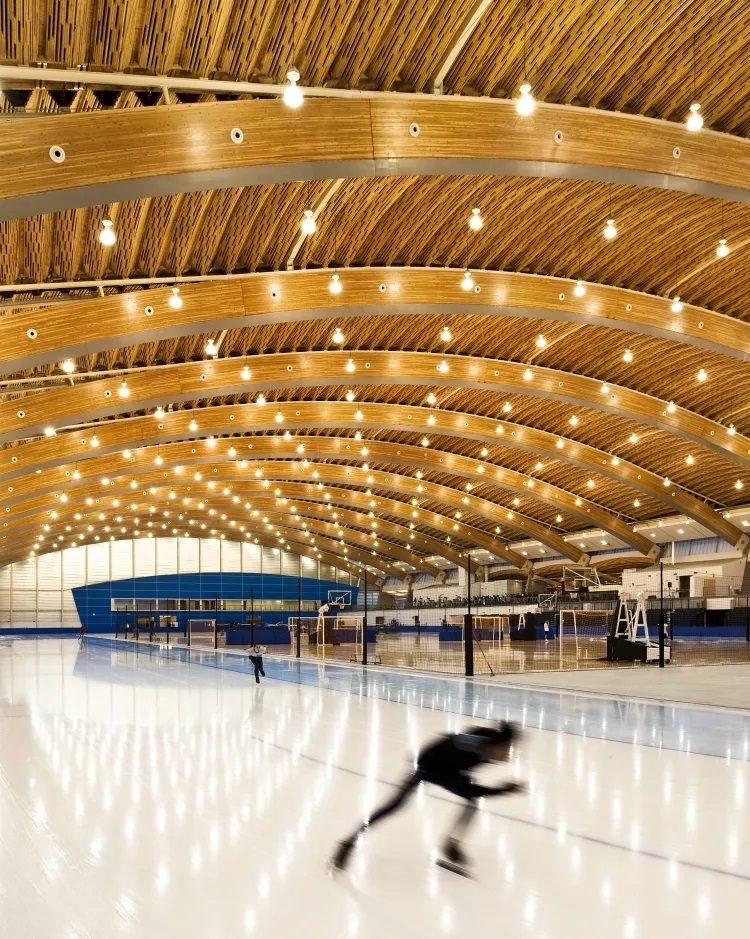
During the Vancouver 2010 Winter Olympics, the world got a look at the striking architecture of the Richmond Olympic Oval. Completed two years earlier, the six-acre arena was built with arches made from steel and mass timber, with prefabricated wooden panels between them. Its grand roof, which won an Institution of Structural Engineers award, looks as though waves of rippling wood are washing over its surface. StructureCraft and another local firm, Fast + Epp, worked on the project.
“We were able to use mass timber on a much larger scale than was ever done in Europe,” said Tobias Fast, director of digital practice at Fast + Epp’s Vancouver office. “I’d say B.C. is still probably the hotbed of design and knowledge,” he observed, though U.S. building codes have allowed quick adoption of similar-sized projects. “Now the Europeans are also trying to go taller. It’s kind of a funny game of catch-up.”
In B.C., provincial and federal governments have been promoting the sector, funding projects, research and education.
While StructureCraft is one of only three manufacturers of mass timber products in the province, B.C. forecasts that seven more will open by 2035.
Considering that construction accounts for 13 per cent of the country’s greenhouse gas emissions, proponents of mass timber say it offers a sustainable building solution, as wood stores carbon and trees are a renewable resource.
Oregon environmental groups are among those who’ve urged caution about such claims, pointing out that the forestry sector is their state’s largest emitter of greenhouse gases and that mass timber can be called green only if it uses wood from certified sustainably managed forests, according to an article by Yale Environment 360, a publication of the American university.
But Brown offers a calculation of the possible gains by citing a tower in Minneapolis that showed “what the new office building could look like in North America.” Called T3, the building designed by Vancouver’s Michael Green Architecture used 3,600 cubic metres of wood, which will sequester about 3,200 tonnes of carbon during the building’s life. Also, the majority of the nail-laminated timber came from trees killed by the mountain pine beetle.
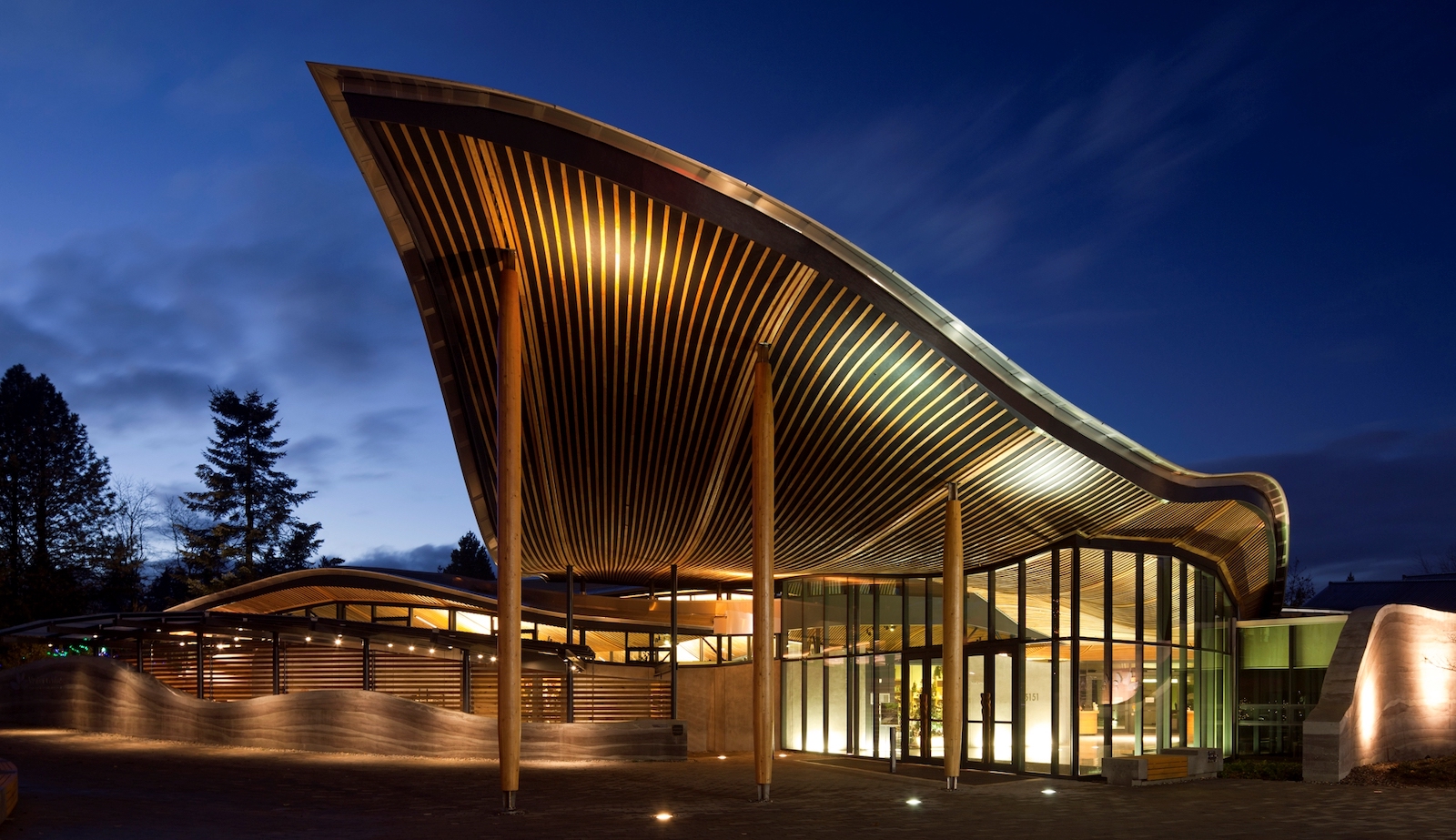
Since the unveiling of the Olympic Oval, mass timber has been used in a wide variety of Canadian projects, from bridges, offices, schools, transit stations, community centres and university buildings to places of worship. Their designs are wide-ranging. Some resemble huge, intricate wooden boxes. There are roofs that resemble fabric. Inside foyers, tall wooden beams evoke a forest.
For Brown, it was the VanDusen Botanical Garden visitors centre in Vancouver, with its free-form roof that referenced the petals of a native orchid, that awed him. In next-door Alberta, there was also Grande Prairie’s Philip J. Currie Dinosaur Museum, with exposed timber beams and struts oriented to look like giant bones. StructureCraft worked on both, and Brown joined the firm in 2015.
“They showed how creative you can be as a structural engineer working with wood, which I was really amazed by,” he said.
Different mass timber products have different strengths and are commonly used in conjunction with one another. Aside from cross-laminated timber, there’s also glue-laminated timber (good at bearing loads and conforms well to curved shapes) and nail-laminated timber (used for floors, walls and roofs).
StructureCraft manufactures dowel-laminated timber, which is made by stacking lumber together, drilling a hole through the centre and fitting a hardwood dowel through that hole. The wood of the dowel has lower moisture content than the lumber surrounding it.
“And so it takes in a little bit of moisture, expands ever so slightly and creates a snug fit,” said Brown. “There’s this friction connection that keeps them together.”
Unlike the other types of mass timber product, dowel lamination means no nails and no glue — all wood. The softwood lumber used for the dowel product is derived from sustainably managed forests in Canada. The firm uses it in its own projects and also sells it. Clients can request different species of wood, from Douglas fir to black spruce, and profiled edges for different esthetics and to help with acoustics in the space where they are used.
Resisting fire and earthquakes
For those unfamiliar with mass timber, their first question about big structures made of wood is whether it’s safe in the event of a fire.
Mass timber is solid and compressed, which prevents air and fire travelling through it. Fire causes charring on the outside, creating a layer of insulation that delays the heating of the wood beneath, allowing it to retain structural integrity and allow time for evacuation.
As for earthquakes, wood has an edge over concrete.
“Obviously here on the West Coast, everyone talks about the next big one,” said Brown, who earned a PhD in timber and earthquake engineering at the University of Canterbury in Christchurch, New Zealand.
“One of the great things about mass timber is that it’s flexible. That’s inherently an advantage in that it can move and almost creak with the earthquake, but it’s not necessarily going to have a brittle fracture. It’s inherently lighter than concrete and steel, and how the force of a building feels in an earthquake is related to how heavy the building is itself. So the lighter the building, the lighter the force is.”
There was a lot to learn about earthquakes in Christchurch because the city is situated on a collision zone between tectonic plates and experienced a major earthquake in 2011.
“There was significant structural damage. Once concrete cracks and the rebar inside starts to yield, it becomes more difficult to determine the repair strategy,” said Brown. “In a timber building, more of the repairs are going to be superficial, such as the windows and the glass and the drywall, which also have a large cost. But the structure itself can be maintained.”
The Tall Wood test
In 2017, what was then the world’s tallest mass timber building was completed at the University of British Columbia. The Brock Commons Tallwood House student residence went up at 174 feet with 18 storeys.
The tower was funded by the federal government’s Tall Wood Building Demonstration Initiative, intended to “showcase the application, feasibility and environmental benefits of innovative wood-based structural solutions for building.”
“There was a massive team assembled by UBC to tackle this challenge,” said Russell Acton of Acton Ostry Architects, which worked on the project.
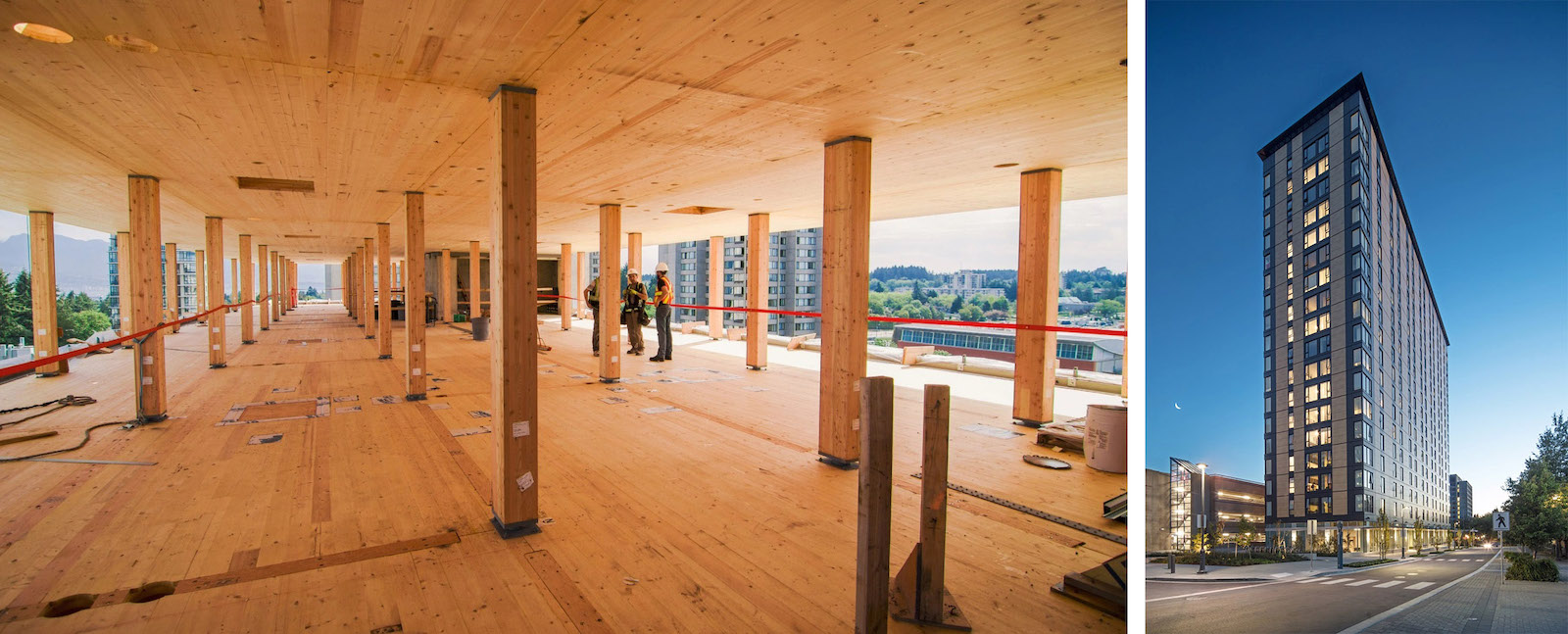
For Acton, a residential tower like Brock Commons sounded like the perfect demonstration of practical mass timber. “If you look at the number of buildings in a city, the majority of them are multi-family residential. So for me, that’s where the impact is.”
Brock Commons was a “hybrid” mass timber project. It relied on a concrete podium and two concrete stair cores, with floor panels composed of cross-laminated timber and the columns made of glue-laminated timber.
“The difference on the mass timber side of things is that a higher level of fabrication is required,” said Tobias Fast at Fast + Epp, which worked on the project too.
“It’s not like when you build a house and you get a bunch of [boards] and cut them down. Everything has to be cut before it arrives and it should just click in place. In order to do that, you have to do a lot of upfront modelling. So that’s a high level of detail in the models. Every panel is modelled. Every cut is modelled. Often every screw is modelled.”
The reward lies in quicker final construction times. Because Brock Commons was built of what’s called a “kit of parts,” the building rose two storeys a week. Constructing a more conventional tower with concrete would have taken about six months. The hybrid mass timber tower was up in 66 days.
Brock Commons’ height would be surpassed by other mass timber towers. But it was part of a wave of wood projects that got everyone talking about mass timber.
Mass timber for the masses?
“During and after the completion of Brock Commons, we were approached by quite a few developers,” said Russell Acton. Many were under the false impression that mass timber was a cheaper way to build. Acton had to break it to them that using mass timber actually meant a premium of at least five per cent.
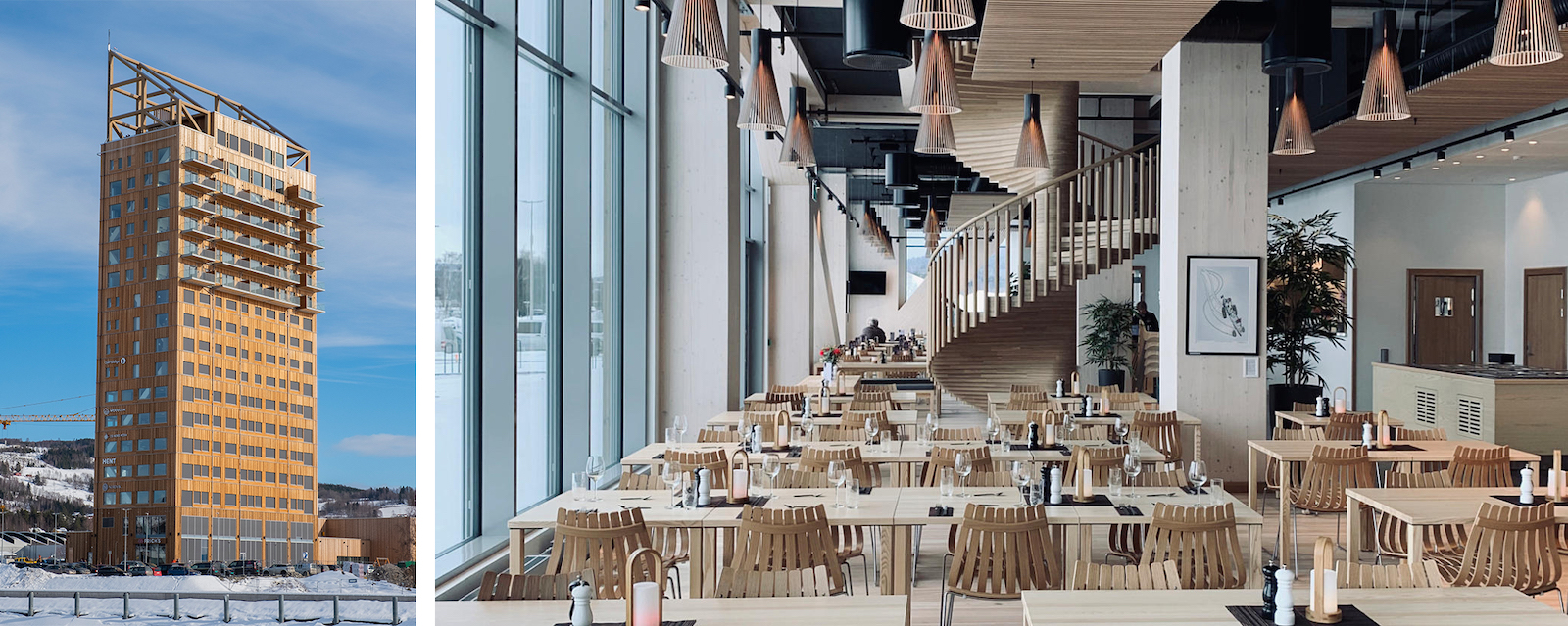
There are, of course, other ways to measure benefits.
There’s the carbon factor. By using mass timber instead of concrete, Brock Commons reduced 2,432 metric tonnes of carbon dioxide, the equivalent of taking around 500 cars off the road for a year.
There’s the premium that a mass timber project could lease for. The landlord of a new office building that uses mass timber could charge more per square foot to be in a unique space.
There are the energy savings, especially in mass timber projects that meet the Passive House standard.
What stands in the way of mass timber homes becoming mainstream throughout the Northwest bioregion, with its ample supplies of timber and skilled designers?
“Cost really is the hugest thing,” said Acton. If mass timber “could get to be at least on par with concrete, then it would get better consideration by developers.” Costs will drop if the region can build a stronger supply chain for mass timber products, replacing dependence on European manufacturers in Austria and Germany, say experts.
In 2016, there were only four manufacturers in North America, according to an RBC report. By 2022, that number had risen to 22 and it is expected to more than double in five years.
On the other side of the Pacific, clients in China are taking to mass timber, relying on B.C. firms like StructureCraft for their products and expertise, building futuristic forms for their booming cities.
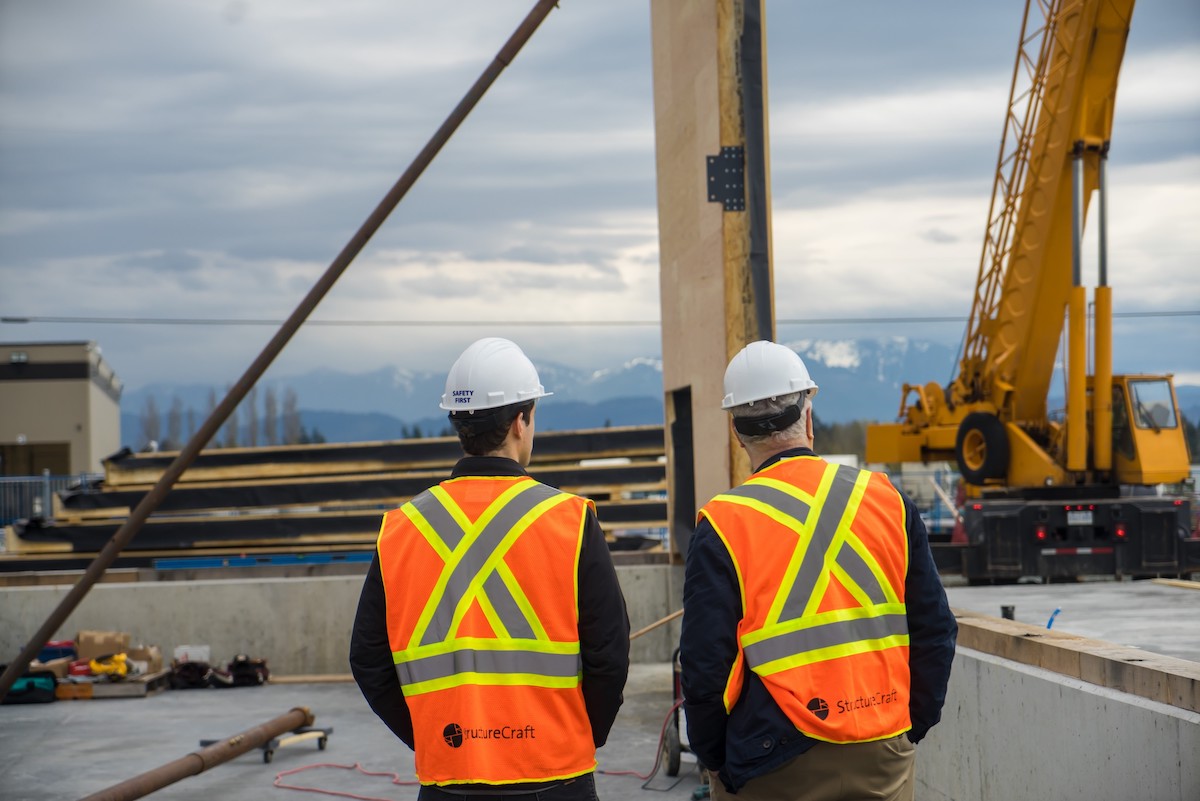
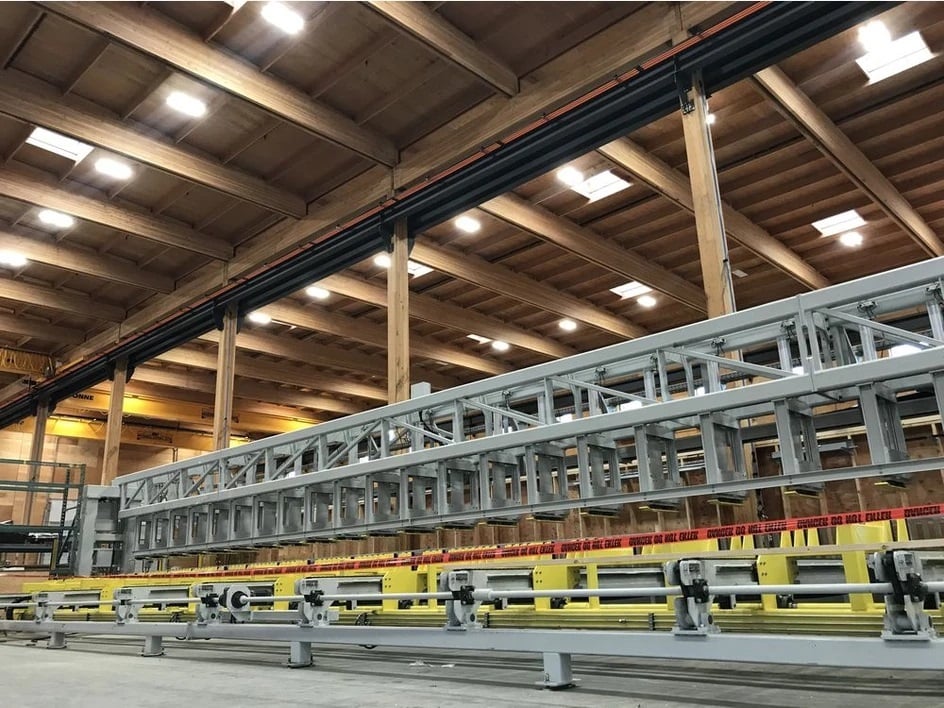
The trajectory for mass timber is “definitely exponential growth,” said Felix Wiesner, an associate professor of forestry at UBC and an expert in fire safety engineering. But that means learning needs to keep up.
Wiesner is investigating mass timber questions including: How do different glues and coatings affect charring? How do different species of wood smoulder differently? And as we have more examples of mass timber structures, what happens to their condition as years go by?
The sector needs more of these answers before jurisdictions expand their building codes, the professor said.
Brown of StructureCraft pointed out that across North America, as building codes make more room for mass timber, the components “are becoming huge. We’re using larger bolts, bigger steel plates and longer screws to connect everything together. And so the big question is, as we scale them up, does our current research still hold?”
Still, said Wiesner, “people are getting more ambitious using mass timber, driven by having more confidence in the building material and having fewer restrictions in the building process as they evolve.”
Those ambitions will be on display in coming months and years in and around Vancouver. The new Vancouver Art Gallery will have a mass timber courtyard, the new 10,000-seat amphitheatre at the PNE will have a curved mass timber roof, and Burnaby will have a highway overpass, library and community centre that all incorporate mass timber.
People who use mass timber spaces say wood gives off a special feeling that concrete does not. A growing number of researchers in B.C. and beyond have attempted to quantify its effect on health beyond these anecdotes. In their studies, they found that the visibility of wood helps decrease stress while increasing concentration, productivity and optimism.
At the StructureCraft facility in Abbotsford, Brown the engineer knows this first-hand.
“If I’m stressed out or need to clear my head, I go for a run in the woods,” he said. “When I go into a mass timber building, I’m almost getting that same sense because I’m surrounded by trees in some way. I think that’s the biggest thing for me. It feels so warm to be there; it gives you a sense of calmness. It’s a pretty special feeling that’s hard to put a price tag on.” ![]()
Read more: Environment, Urban Planning
















Tyee Commenting Guidelines
Comments that violate guidelines risk being deleted, and violations may result in a temporary or permanent user ban. Maintain the spirit of good conversation to stay in the discussion and be patient with moderators. Comments are reviewed regularly but not in real time.
Do:
Do not: